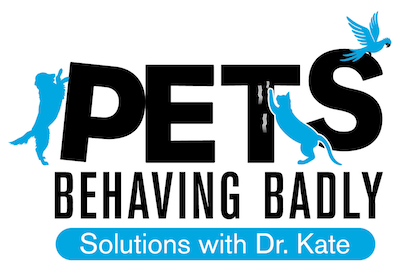Christmas trees and decorations:
Christmas trees, both real and artificial, can be irresistible to curious cats and playful puppies. All that bright and shimmery tinsel, flashing lights and hanging decorations can make exciting new toys to play with.As lovely as they are to look at, tree decorations can be hazardous. Baubles can break and cut paws if they're stood on and decorations can cause choking or gastrointestinal obstruction if eaten. Christmas tree lights pose an electric shock risk when they're turned on with puppies, kittens and rabbits most likely to chew on them.
Cats and kittens may also be tempted to climb the tree as it provides a high vantage point and this could easily cause the tree to topple over. The presents underneath the tree, especially edibles (e.g. nuts and chocolate), can also be problematic.
 |
| Image: Steve Jurvetson on Flickr |
If you have some time, you can teach your pets that being on their beds or just leaving the tree alone is very rewarding. DO this by reinforcing (rewarding) that behaviour with high value treats, praise and favourite toys. Done frequently and consistently this will help reduce the likelihood your pets will focus on the tree. That said, when you're not home, the tree may be the most interesting thing for your pets to play with, so it's best to ensure they can't access it when you're out!
Festive foods:
We all like to over indulge at Christmas time but did you know some of the festive foods we consume can be downright dangerous for our pets? The Australian Veterinary Association (AVA) warns not to allow pets to eat these popular festive foods:- Chocolate
- Nutmeg
- Grapes and raisins (including Christmas pudding and mince tarts)
- Avocado
- Macadamia nuts
- Onion and garlic
- Turkey skin, pork crackling, sausages and other fatty meats
- Alcohol
If consumed, even in small quantities, these foods can cause illness and be potentially toxic. If you suspect your dog has been poisoned, call your vet immediately for advice.
Fireworks:
Celebratory fireworks come hand in hand with Christmas and New Years Eve. As much as we love the raucous cracking explosions of colour across the night sky, fireworks cause many of our pets to run for cover, literally.Fear of loud noises is completely normal and is a survival mechanisms in animals. However, when the fear becomes chronic it's called a phobia. Dogs, particularly, can suffer from a phobia of fireworks causing a range of symptoms include pacing, panting, barking, whining, house soiling, attempting to escape the home or backyard (particularly when home alone). Some dogs become so terrified they cause damage to themselves and the home in their attempts to escape the noisy light show.
If your dog is scared of fireworks it's best not to leave them home alone, especially if you have a fireworks display scheduled for your local area. Bringing your dog inside, drawing the curtains and having the TV on with the volume high can help drown out the sound.
Distractions such as a puzzle toy filled with high value treats given to your dog when fireworks start can help take your dog's mind off the scary event and help create a positive association with them. In extreme cases, fast action anti-anxiety medications may be required to help your dog cope. This should be discussed with your veterinarian.
Ensure your pet's microchip and ID tag details are up to date in case they do manage to escape your property. This will make it much easier for people to reunite you with your lost pet.
Professional help is available if your dog is fearful or phobic of fireworks (and thunderstorms, as they often occur at the same time of year) and should be sought. Look for a well qualified and reputable dog trainer (who specialises in treating fears and phobias), a qualified animal behaviourist or a veterinary behaviourist.
By keeping these potential dangers in mind you and your pet are sure to stay safe and enjoy the silly season together. Merry Christmas and Happy New Year!




